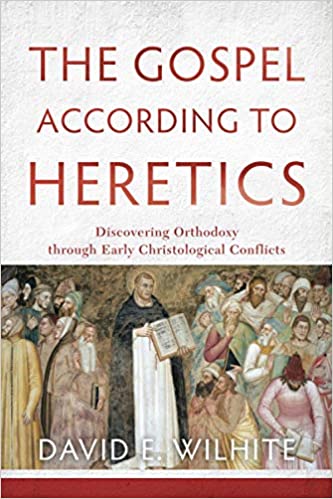A Brief Book Summary from Books At a Glance
About the Author
David E. Wilhite (PhD, University of St. Andrews) is associate professor of theology at George W. Truett Theological Seminary, Baylor University, in Waco, Texas. He is the author of Tertullian the African, coauthor of The Church: A Guide for the Perplexed, and coeditor of Tertullian and Paul.
Overview
Wilhite seeks to offer a balanced reading of both the major heresies and their orthodox critics over the course of the first eight centuries of church history. As his title suggests, the heretics typically arose as attempts to preserve the gospel, and particularly the Person of Christ, rather than re-interpret or re-create it. Nonetheless, through these heresies, the orthodox consensus came to a deeper and more precise understanding of who and why Jesus is worshiped by the church universal.
Table of Contents
Introduction: Defining Heresy, Revising Orthodoxy
1. Marcion: Supersessionism
2. Ebion: Adoptionism
3. Gnostics: Docetism
4. Sabellius: Modalism
5. Arius: Sumordinationism
6. Apollinaris: Subhumanism
7. Nestorius: Dyoprosopitism
8. Eutyches: Monophysitism
9. Iconoclasts: Antirepresntationalism
10. Muslims: Reductionism
Conclusion: Heresy according to the Gospel
Summary
Introduction
Defining Heresy, Revising Orthodoxy
Wilhite discusses his methodology and approach to reading and interpreting the ten heretics he will survey in this book. In the background of the discussion are the many recent attempts to revise our assessment of the accuracy, sincerity, and authority of the orthodox winners’ interpretation of their theological and ecclesiastical opponents.
Wilhite seeks to offer a balanced reading of both modern revisionism and early orthodox rhetoric concerning the heretics. Wilhite embraces his perspective as a member of the orthodox consensus. Yet this perspective, Wilhite hopes, is a product of a critical assessment of historical data and the orthodox arguments which remain persuasive even after many of their questionable facts and rhetoric have been noted and, if need be, rejected. As such, he offers no new sensational readings of the heretics to exonerate them, yet at the same time he wants to provide “an honest and critical” reading of the orthodox fathers who wrote very one-sidedly about the heretics.
A large question at the center of modern revisionist interpretations of early church history is the issue of how to define “orthodoxy” and “heresy.” Wilhite will use a definition that recovers how the early church itself understood these terms. “Orthodoxy,” according to the early church fathers who defended it, was equated with the tradition which is demonstrably ancient, apostolic, and therefore accords with the “Rule of Faith” which, in essence, summarized the basic outline of the gospel. “Heresy,” as such, represents the opposite of this. It is identifiable as neither ancient, traditional, nor apostolic and generally is novel and innovative in a way that steps beyond the Rule of Faith.
Chapter 1
Marcion: Supersessionism
Reconstructing the historic biography of Marcion is extremely difficult given the fact that any data we have is provided by his opponents and is generally used to portray Marcion in a negative light. Tertullian and Justin Martyr wrote against him during or just after his death which gives us some assurance that information on Marcion cannot be purely fictitious if Marcion still had many living followers and disciples at the time. Wilhite argues that we can be more confident in what Marcion believed (again as portrayed by his opponents since we have no existing works by Marion himself) because a consistent logic can be traced in his theological method.
Marcion is best known for his novel approach to Scripture, forcing the orthodox to develop a theology of the canon and consolidate it. However, Wilhite suggests that the fundamental issue that drove Marcion’s heresy and the orthodox response was Christology. Marcion elevated the “love of God” as supremely manifested in Jesus Christ, saw the Old Testament portrayal of deity as falling short of this ideal, and therefore posited two separate divine persons being manifested in the New and Old Testament.
[To continue reading this summary, please see below....]The remainder of this article is premium content. Become a member to continue reading.
Already have an account? Sign In
